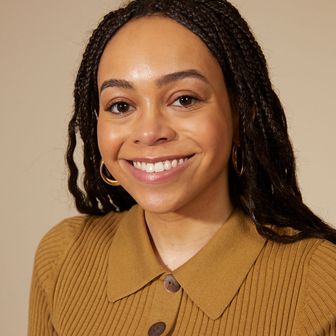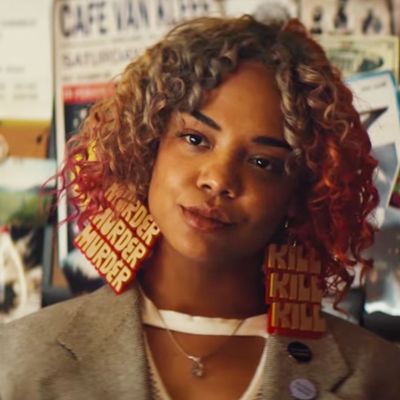
Lakeith Stanfield is a telemarketing everyman dressed haphazardly, wearing fuzzy patterned sweaters that add a sort of visual slouch to his character. Armie Hammer is a hypermasculine business czar, dressed like any other multi-millionaire roaming around Williamsburg looking for a culture to appropriate. Tessa Thompson is Stanfield’s girlfriend, with hyperchromatic curls, paint-splattered jumpsuits, and politically motivated earrings. Danny Glover is Stanfield’s humble mentor, whose anachronistic Westernwear seems to suggest a secret past.
In Sorry to Bother You, they all populate Boots Riley’s anti-capitalist fever dream, where, in the not-too-distant future, black characters talk in “white voice” and families sign up for indentured servitude in gaudy prisons branded as “WorryFree” centers. As Riley prepared to shoot the film, he realized the characters needed costumes to capitalize on their strange, effervescent personalities — and that’s where Deirdra Elizabeth Govan came in.
Govan, a costume designer who’s worked on Boardwalk Empire and Roxanne Roxanne, read Riley’s script as she was jetting off on her honeymoon, and couldn’t get the politically charged comedy-drama-satire out of her mind. “I literally was on the beach with my fiancé doing research on my phone, searching visual ideas, really tapping into the gentrification, seeing the style of what’s going on in Oakland artistically,” she told Vulture. “Someone asked me recently, ‘What designer did you use, who gave you clothes?’ I said, ‘Nobody!’ This was me hitting the paving, hunting, searching, and gathering from vintage shops, from old haunts of Oakland, really using my mind and the resources at hand to really tell the story through clothing.”
Vulture caught up with Govan before the film’s July 6 release to talk through the surreal, totally singular wardrobes for the five main characters.
Cassius Green (Lakeith Stanfield)

As Govan started conceptualizing how Cassius would dress, one line from the Sorry to Bother You script stood out to her: “There was a line explaining what Detroit saw in Cash, and part of it was that he dressed like his mother was still dressing him,” she says. “He had clothing pieces for years. He wore khaki pants, and the same shoes that might’ve been his dad’s at one point or another. He got vintage ties that might’ve been from his uncle. He has a style that has pretty much stayed consistent probably since he was in high school.” Cassius matches busy prints and textures, but his looks remain unassuming, as if he’s just pulling from a closet of hand-me-downs. “
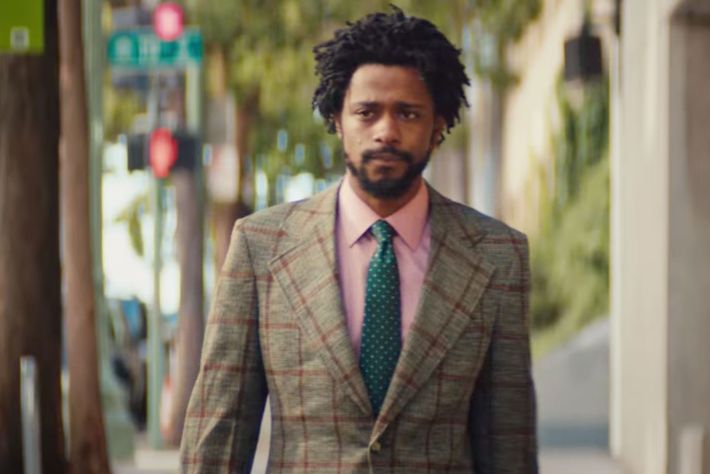
Unlike any other character, however, Cassius’s costumes needed to show his shift from populist telemarketer to capitalist power caller. Cash pulls out his nicest suit for his first day of power calling: a busy tweed green suit with a pink button-down. Subtly, his costuming matures: Instead of nondescript fuzzy sweaters, he starts wearing more color. “We start to see the evolution of him as a power caller, and it goes literally into Technicolor with jewel tones,” says Govan. “I was really going for hi-def, because being a power color is all about the intensity — high-powered, fast and furious sales. The color palette needed to be strong like that as well.”
Steve Lift (Armie Hammer)
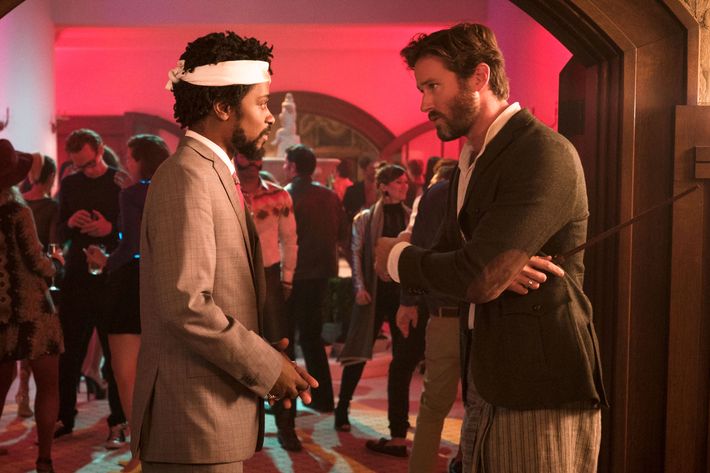
Imagine a Winklevoss twin on steroids, with a few sets of japa mala bead bracelets adorning his wrists: That’s Steve Lift, Armie Hammer’s Sorry to Bother You character. Govan’s costuming is brazenly hilarious: Lift is the kind of capitalist captain of industry that might sip matcha as he signs workers into slavery in the movie’s work prisons. “Armie and I were having a conversation about who this guy was. We were trying to go for a look of a hipster dude, wearing a slick suit but maybe not wearing a shirt, walking around in Tom’s shoes or espadrilles all day. And has a man-bun.”
The man-bun didn’t end up happening, but everything else stuck. The result is a costuming that gleefully satirizes a culture-vulture capitalist: Steve Lift pairs linen kaftans with leather riding boots, Jesus sandals with tweed blazers. “He has his equestrian boots on, like, I can break the rules at the end of the day, because I can have who and whatever I want at any point in time …” Govan says. “We just really wanted it to be someone who was like, wow, this dude is a real … ass!”
Mr. ___ (Omari Hardwick)
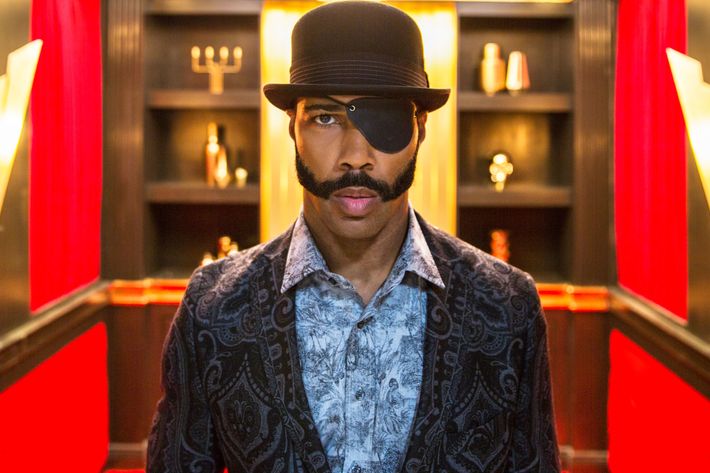
As the power-caller manager, Mr. ___ is a flashy dresser with a muted personality. He wears an eye-patch — a key character detail that Govan, Hardwick, and Riley decided to add while on set. The patch itself came from a local Oakland leather shop owned by one of Riley’s friends. “Mr. __’s signature is the bowler hat, his eye patch, of course, a fabulous suit,” Govan says. “Sometimes you gotta do a deep dive into Boots’s mind to really understand, take whatever abstract information he’s giving you, and distill it down. This is the perfect example of that.”
Langston (Danny Glover)
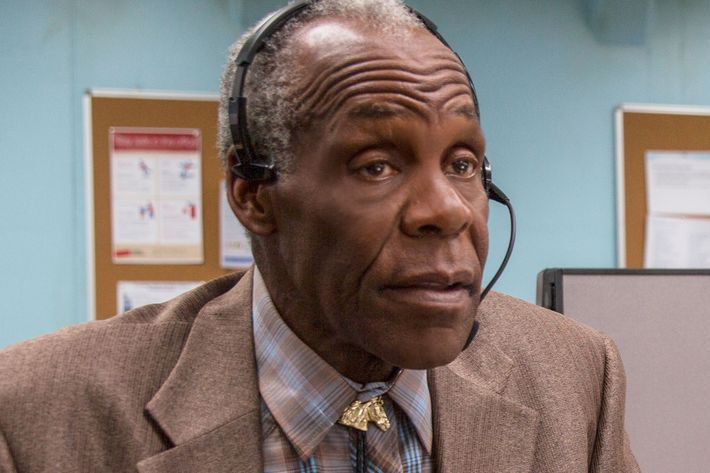
Danny Glover only has a few lines, but his dressing is distinctive — particularly the bolo tie he wears in his first scene. The character’s style wasn’t clearly outlined in Riley’s script, so Govan pulled from her own roots as a black woman growing up in Texas: “I had a great-grandfather who had cowboy hats, and I had an uncle who wore cowboy hats and Wrangler jeans with the big belt buckles,” she says. “Oakland has also a rich history of black cowboys and that’s who I really wanted Danny to be: A retired black cowboy who still wore his Stetson and had great bolo ties. What was interesting was Danny himself has a collection of Stetsons.”
Detroit (Tessa Thompson)
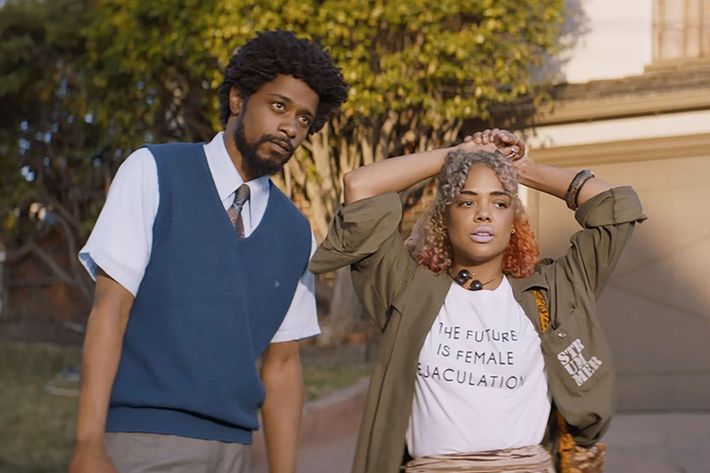
Detroit’s looks are the flashiest: the “Future Is Female Ejaculation” T-shirt, the “Murder Murder Murder-Kill Kill Kill” earrings, the sequined joggers. “[Detroit is] Afro-punk, Afrofuturism, really pro-feminist, very smart, very savvy. She’s not necessarily speaking through words, but through art,” Govan says.
The looks only work because they are so thoroughly consistent, excess — busy fabrics, loud textures, layered designs — in balance. “Her character, in my mind, had a lot of layers,” adds Govan. “The earrings were the starting act of her look, but they had to be in balance with the rest of her costume pieces. Every ounce of Detroit was vintage. Every ounce of her was researched and thought about. We borrowed from a punk area, we borrowed from Patti Smith, with the blazer and the tie.”
As for that “Future Is Female Ejaculation” shirt? “It was meant to have that impact. It was meant to be Oh, okay. This is a woman who has something to say and she’s not using her mouth to say it,” Govan says. “[Detroit] uses every every piece of clothing on her body to articulate what she’s thinking.”


